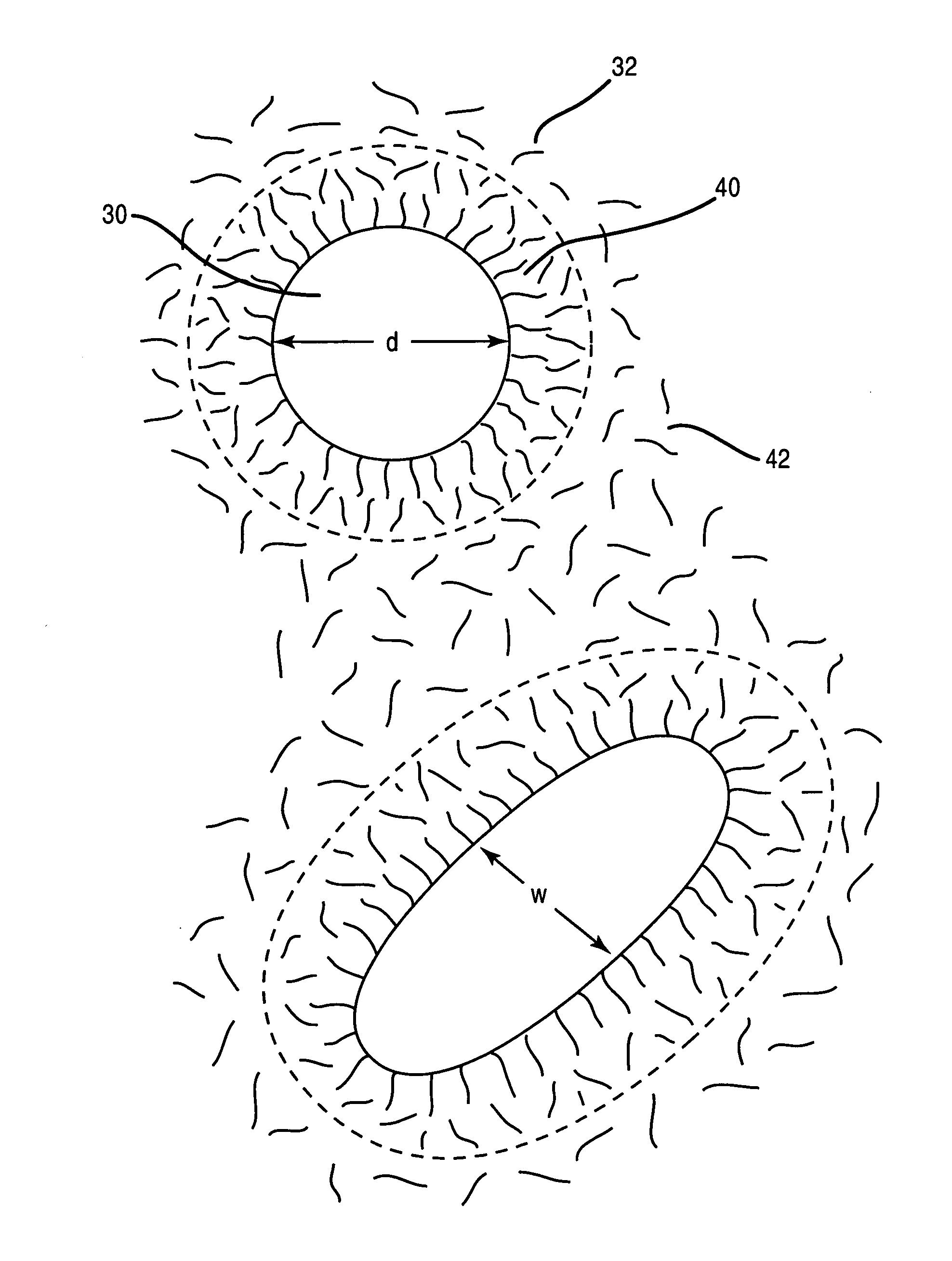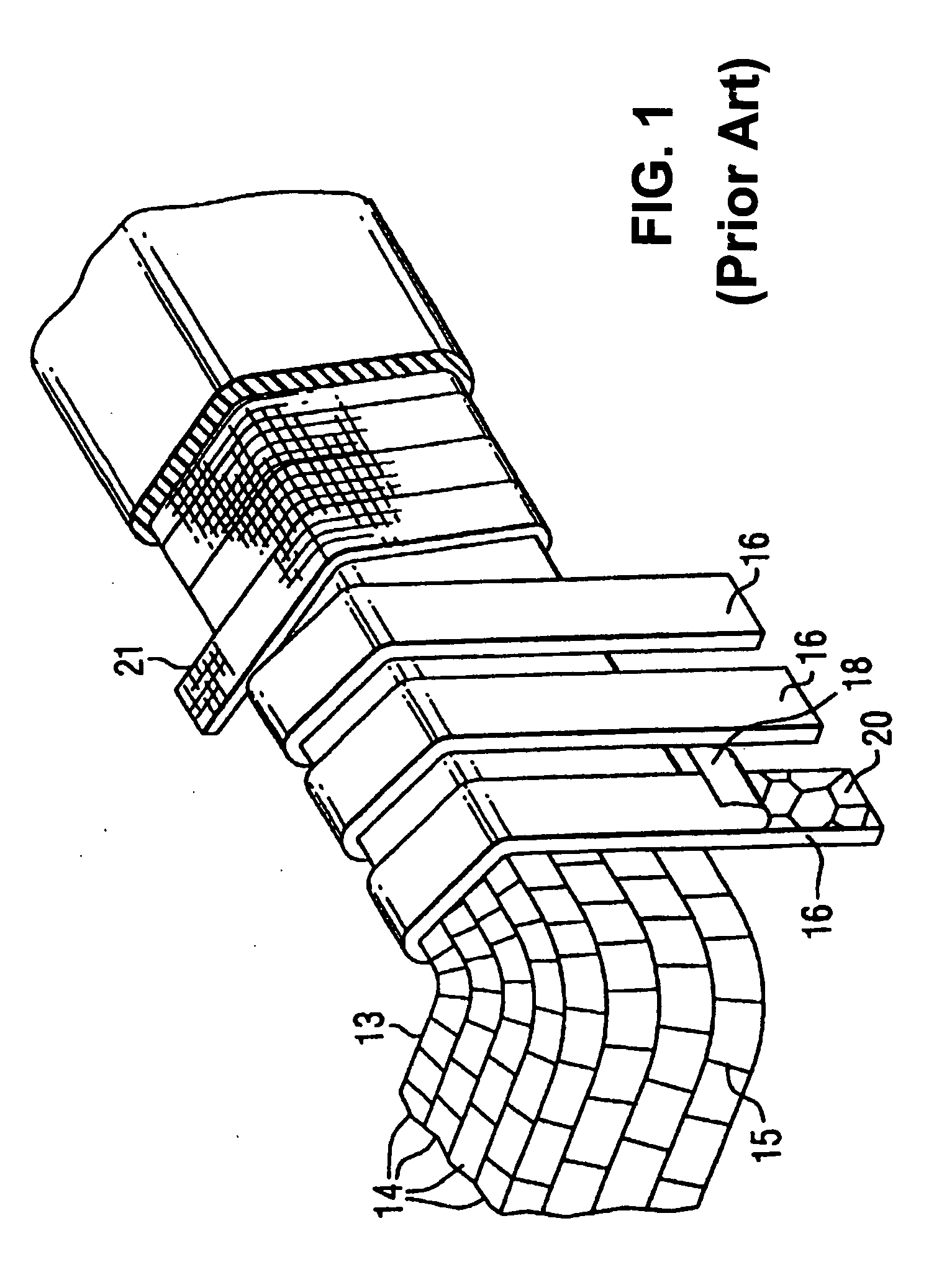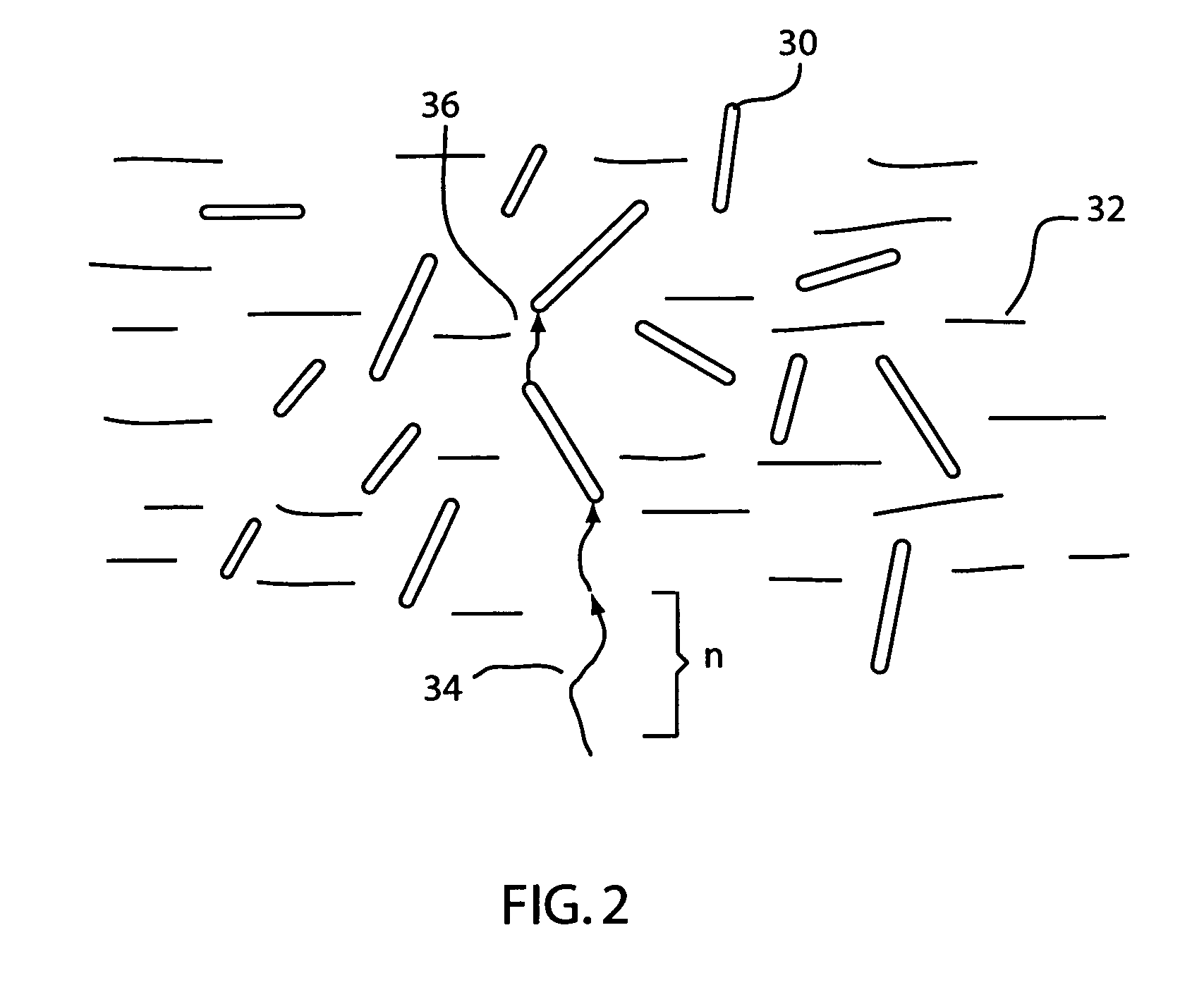Nano and meso shell-core control of physical properties and performance of electrically insulating composites
a technology of electrical insulation composites and shell cores, which is applied in the direction of transportation and packaging, synthetic resin layered products, chemistry apparatuses and processes, etc., can solve the problems that most inorganic materials do not allow independent selection of structural characteristics, and achieve high thermal conductivity (htc), facilitate the transport of phonons, and reduce the effect of mean distances
- Summary
- Abstract
- Description
- Claims
- Application Information
AI Technical Summary
Benefits of technology
Problems solved by technology
Method used
Image
Examples
Embodiment Construction
[0028]The present invention provides for a high thermal conductivity (HTC) composite. HTC composites comprise a resinous host network combined with nano, meso and micro fillers that are two phase organic-inorganic hybrid materials. The organic-inorganic hybrid materials are formed from two phase organic-inorganic composites, from organic-inorganic continuous phase materials that are based on molecular alloys, and from discrete organic-dendrimer composites in which the organic-inorganic interface is non-discrete with the dendrimer core-shell structure. Phonon transport is enhanced and phonon scattering is reduced by not only the distribution of the HTC fillers, but also the ordered resin shell (ORS) created around the HTC fillers. In particular, various embodiments can be used to form overlapping ordered resin shells.
[0029]Engineered electrically conducting and insulating composite materials having prescribed physical properties and performance characteristics may be formulated with ...
PUM
| Property | Measurement | Unit |
|---|---|---|
| Fraction | aaaaa | aaaaa |
| Fraction | aaaaa | aaaaa |
| Percent by mass | aaaaa | aaaaa |
Abstract
Description
Claims
Application Information
 Login to View More
Login to View More - R&D
- Intellectual Property
- Life Sciences
- Materials
- Tech Scout
- Unparalleled Data Quality
- Higher Quality Content
- 60% Fewer Hallucinations
Browse by: Latest US Patents, China's latest patents, Technical Efficacy Thesaurus, Application Domain, Technology Topic, Popular Technical Reports.
© 2025 PatSnap. All rights reserved.Legal|Privacy policy|Modern Slavery Act Transparency Statement|Sitemap|About US| Contact US: help@patsnap.com



